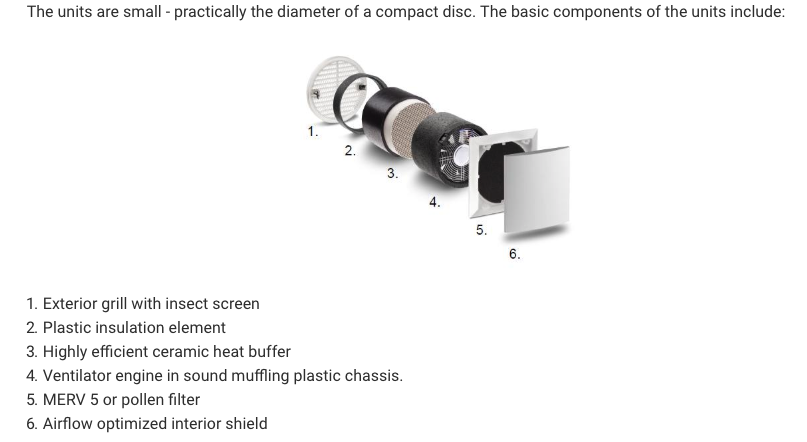What Do HRVs Do For The Air Quality In My Tiny House?
Do I need one in my tiny house?
The tiny houses built by B&B Tiny Houses are well insulated and sealed. This works great for keeping the inside warm in the winter and cool in the summer, but it means the air inside can get stale.
HRVs, or Heat Recovery Ventilators, control a home’s humidity, reduce indoor mold and mildew, and exhaust stale, polluted air. Unlike traditional vent fans, however, HRVs recover some of the warmth that’s being exhausted to the outside in the winter time, while removing the pollutants and moisture to ensure that the fresh air coming in is still warm. Maintaining the temperature of the air while exchanging stale air for fresh air cuts down on the cost of heating a home.
The HRVs we use in our tiny houses come in pairs, where units are placed on opposite walls and air flow is transferred back and forth. In a tiny house, only one pair is necessary, because it’s such a small space. Each unit is installed directly on an exterior wall, so no ductwork is needed. Even when the door to, say, the bathroom is closed, it’ll still work because we leave a 3/4″ space beneath the door in tiny houses with HRVs. They are turned on and off by a switch.
From the 475 Lunos e² HRV website:

#6 in the photo is the part you’ll see on the interior wall of your tiny house. #1 is what you’ll see on the outside of the tiny house.
Where should HRVs be used?
Heat Recovery Ventilators are for use in the USA’s northern states. Energy Recovery Ventilators (ERVs) are to be used in the southern states.
Does an HRV warm or cool the house?
No; it maintains the inside temperature, rather than sucking all the heat or cool out of house.
Is it loud?
The system contains a sound muffler. It produces 0.12 sones at its lowest setting while a quiet refrigerator in a quiet kitchen produces about 1.0 sones.
Do I really need an HRV in my tiny house?
There are a few factors to consider when deciding whether to spring for an HRV. The type of HRV we use costs around a few thousand dollars, so it’s worth spending the time to decide whether you really want one in your home.
Factors to consider include:
- How many people will live in the tiny house? The more people, the staler the air will be.
- How often is the tiny house used? Is this your primary residence or your vacation home? If it’s just used as a weekend cottage, an HRV system is probably not necessary because new air pollutants will not be introduced every day; a simple bathroom exhaust fan, while less energy-efficient, should do the trick.
- What is your sensitivity to mold? HRVs prevent the buildup of mold and mildew: those with an allergy or sensitivity to mold or mildew will benefit from an HRV system.
- Do you have breathing issues? Those with asthma, dust mite allergies, and other breathing issues may benefit from this air exchange.
- What is your cooking style? Scents from cooking may linger in a home, even with propane stoves come with a range hood. An HRV can help get rid of cooking odors.
- How energy efficient do you want your house to be? HRVs introduce new fresh air, warmed by the old stale air, into the house. Consider the cost of the HRV versus the cost of heat energy you’ll save by installing one. If you aren’t heating your tiny house full-time in the winter, the HRV will take longer to pay for itself.
What if I don’t use an HRV?
It’s important to not let mold and mildew build up from the moisture created by your bathroom and kitchen. But if you don’t have an HRV in your tiny house, there are other ways to get fresh air into your home. Our tiny house bathrooms come with a vent fan that goes on whenever the bathroom light is switched on. Vent fans will let the heat out of your house in the winter, but they are included with the basic model tiny houses and are much less expensive to install. You can also just open your windows periodically to let the fresh air in. All of our houses with a propane stove/oven also come with a kitchen range hood.
How do HRVs work?
This video explains how a heat recovery ventilator works. The example shown in the video is for a much larger house; the ones used in tiny houses look like white squares, CD case shaped attached to the wall at opposite ends of the house.